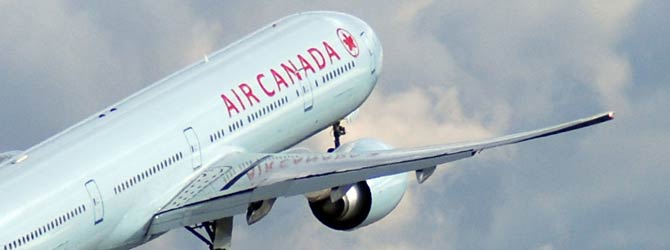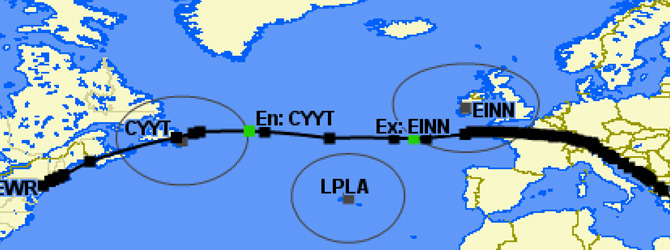
There comes a point in our virtual careers when we take the leap to make our first long haul flight. It may be a hop across the pond or the 22 hour flight from Shanghai to New York. These flights consequently come with more planning and attention to detail but with these 5 simple steps, you can ease that transition to the heavy birds.
1. Flight Planning Tools
The first step to planning a flight are the resources that can aid us in making weather predictions or plotting a route. You will need some kind of software package to help you formulate all of this data. As of now, there are several ways to accomplish this but I will discuss just a few of the more recent options to come into the industry.
Freeware – Simbrief, RouteFinder, charts.aero
Payware – PFPX, TOPCAT, Jeppessen Charts
I could talk about all of the flight planning software and resources at our disposal but that will be its own post in the future. For the time being, feel free to choose your own adventure with these websites.
2. ETOPS Operations
This may be the hardest concept to become familiar with primarily because it requires an understanding of airspace and navigation that most pilots are not quite familiar with. Let’s begin with a small history lesson. Prior to jet propelled aircraft, small prop-liners had to remain within a one hour flight time from the closest airport. This greatly limited how aircraft traveled across large bodies of water or rural areas. However technology prevailed and now we have more reliable jet engines which can obtain a higher ETOPS rating than 60-minutes. Most jets are certified for 90 or 120 minute ETOPS rules, but the aircraft you will be flying may have upwards of 180-minute ETOPS ratings! You may be even surprised to know that some next generation aircraft like the A350WXB and the B787 are currently working to rate for 350-minutes and 330-minutes respectively.
Let’s say we are flying from New York to London in our brand new PMDG B777-200LR and we know that this will be an ETOPS flight because we will be over the Atlantic Ocean for a long period of time. Let’s take a look at our flight route across the Atlantic.
As you can see, there are several circles located on the map (these represent sixty minute rings around our valid ETOPS alternates). During the time that we are not inside the rings, we are currently operating under ETOPS rules and must remain within the limits of our certification. I have attached a screenshot of an ETOPS release compliments of simbrief.com.
You can see there are three stages to our ETOPS portion of the flight. The entry point in which we are leaving the sixty minute ring of the closest airport. Now we are flying along our flight until we reach our Equal-time Point, noted as ETP #1 on the release. If an emergency or failure were to occur before the ETP, we will go to the first listed airport (LPLA). If it occurs afterwards, proceed to your second ETOPS alternate (EINN). There can be more than one Equal-time Point if a flight is long enough, but for our hop across the pond today, we only have one. As we approach Ireland, we enter into the sixty minute ring around EINN and are no longer in an ETOPS zone.
3. New Phraseology

If this is your first time flying out of your home country, you may find that there are some differences between FAA and ICAO phraseology. While there is a bit of a learning curve, you will find that there are some key similarities that should ease the transition. Here are some examples of different ways ATC will communicate with you on your flight.
Clearances
FAA: Speedbird 184 Heavy, cleared to Heathrow International Airport via the Newark 1 departure, climb and maintain 5000, expect flight level 330 10 minutes after departure, departure will be offline, squawk 1234.
ICAO: Speedbird 184 Heavy, cleared to Newark Liberty International via the Southampton 2 Foxtrot Departure. Squawk 1234.
As you can see ICAO clearances are much more abbreviated primarily because the information regarding initial altitudes and restrictions are listed on the SID chart.
Transition Altitudes
You will notice that transition altitudes will not always be 18,000 feet as they are in the United States and Canada. This is reflected in ATC phraseology, when you hear “descend and maintain flight level 80”, it simply means descend to 8,000 feet.
There are obviously more differences that you should become familiar with so here is a full guide to some phraseology on IFR clearances: http://www.vatsim.net/prc/prc-ifrspec/ifr-clearances/
4. Step Climbs
As you begin to progress through a flight and burn fuel, your aircraft will become lighter. If we take a look at our VNAV page in our FMC, we can see there is an Optimal Cruise Altitude as well as a Maximum Cruise Altitude. Step climbs are performed to optimize performance and fuel burn. For example, you may be too heavy to make it up to FL360 right after departure so you start with an initial cruise altitude of FL340 and simply burn off enough fuel to bring the Optimal Cruise Altitude up to FL360. Then change your cruise altitude in the FMC and perform a 2000 foot climb using FLCH or VNAV.
5. NATs/PACOTs
Each day, a set of “tracks” are released which are plotted to optimize performance and traffic efficiency. When planning your flight across the ocean, be sure to check that day’s NAT/PACOT tracks and ensure your route matches one of the active tracks. See #1 for more info.
Whew! That is a lot if information to handle! Flying these big planes wasn’t meant to be easy, nonetheless. Although to newer pilots, long haul flights may present a challenge, you can now feel more confident with the power of knowledge!
Throttle On!
This article was posted in 777, Airliners, Blog, Boeing 777, Flightsim Tips, PMDG 777
Please note: We reserve the right to delete comments that are snarky, offensive, or off-topic. If in doubt, read the Comments Policy.


